Letter of Rights for Scotland: consultation response summary
An analysis of responses to the consultation document "Consultation on the Letter of Rights for Scotland" which sought the views of key stakeholders and members of the public on the current Letter of Rights for Scotland.
Key Findings
Respondents were broadly supportive of both the current versions of the Letter of Rights, however a number of key issues were identified with both versions (the 'standard' and the 'easy read') and these have been highlighted below.
Questions
Questions on Content and Format
1. Do you consider the content of the 'standard' version of the Letter of Rights easy to understand?
Yes/No
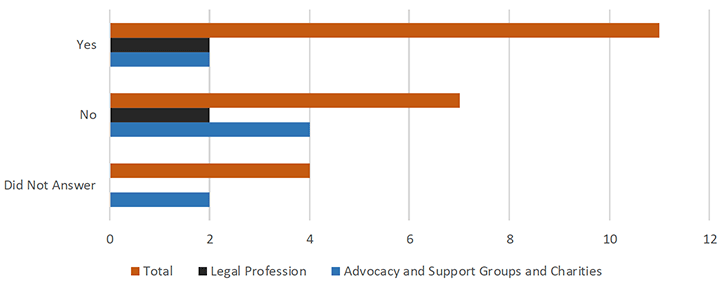
If not, why not?
Over half of the respondents felt that the 'standard' version of the Letter of Rights was easy to understand. However, responses to this section of the question were from those that either answered 'no' or from two individuals that answered 'yes' but stated that the reason they felt the Letter of Rights was easy to understand was due to their background knowledge around the situations in which the Letter of Rights is used.
There were some issues highlighted about the clarity of the Letter, such as concerns around stating that individuals do not have to answer questions posed to them by the police before later in the document stating that they must answer the welfare questions.
There were some concerns around the language used and suggestions that it was not easy to understand and made use of phrases that were not in common usage.
Two respondents suggested that there should not be two versions of the Letter and that the 'easy read' version should be provided to all individuals as standard. There were some comments that having two versions was unnecessary and confusing and could be viewed as patronising. Those who need the 'easy read' version may be too embarrassed to ask for it. Having one 'easy read' version would remove the stigma.
It was also suggested that the Letter is overly long and should be made more concise, and that it was only easy to understand if you are already familiar with the police station environment.
Five respondents all stated that it is not easy to understand and could be made clearer.
2. Is the content of the 'easy read' version of the Letter of Rights easy to understand?
Yes/No
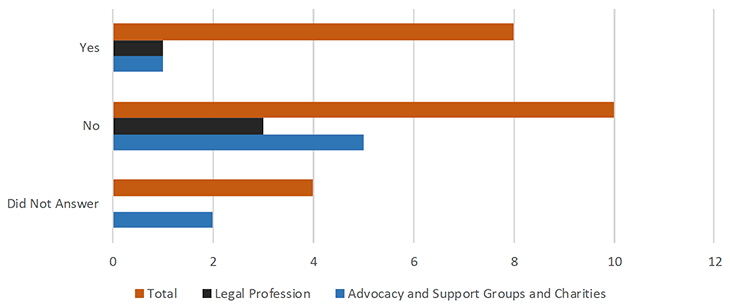
If not, why not?
Fewer respondents felt that the 'easy read' version of the Letter of Rights was easy to understand compared with the Letter of Rights itself. Over half of respondents did not feel that the 'easy read' version of the Letter was easy to understand and a number of concerns were raised. These centred on the language and images used in the 'easy read' version of the Letter.
Respondents state that there is little difference between the two versions of the Letter aside from the addition of some illustrations which do little to provide clarity.
The Police Service of Scotland (PSoS), the Law Society of Scotland (LSS), the Edinburgh Bar Association (EBA), the Public Defence Solicitors Office (PDSO), JUSTICE Scotland, the Centre for Youth and Criminal Justice (CYCJ), the SOLD network (who support offenders with learning disabilities), and Deaf Scotland all responded stating that they do not consider it easy to understand.
Three respondents suggested that the document is overly long and that revisions of the document should focus on prioritising information to make it as short as possible to help with understanding.
One respondent highlighted the importance of the availability of appropriate adults or interpreters to explain rights to an individual and discuss areas that they are not clear about.
3. Do you consider that the versions of the Letter of Rights cover the key information individuals need to know when being held in custody?
Yes/No
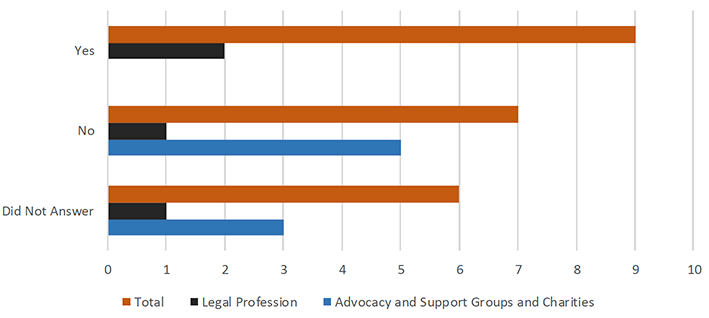
If not, please indicate where in the Letter the content requires clarification or is missing information and suggest alternative content.
A number of respondents identified that the Letter should make reference to access to sanitary products, showering and comfort breaks and provide information on rights in different circumstances, e.g. when being strip searched. Inconsistencies between the information provided in the Letter and on the corresponding MyGov page was also identified.
One respondent felt that there was insufficient clarity on the issues of communication and one felt that the language used in the Letter was unclear and required revision.
One respondent highlighted that reference should be made to the fact that a private conversation with a solicitor can be made quickly via telephone and does not necessarily have to happen in person. A further respondent suggested that the Letter needs to provide more information on the role of the solicitor and the help that they can provide to an individual in custody.
However, one respondent suggested that the Letter contained too much information and that the information that an individual needs to know at that particular time should be prioritised.
The view was also stated that the Letter should contain information on the right to make a complaint to Police Scotland about an individual's treatment while in custody.
4. Does the way the information is organised in the 'standard' version of the Letter of Rights, i. e. with a text box at the beginning, help to convey key information in a way that is easily understood?
Yes/No
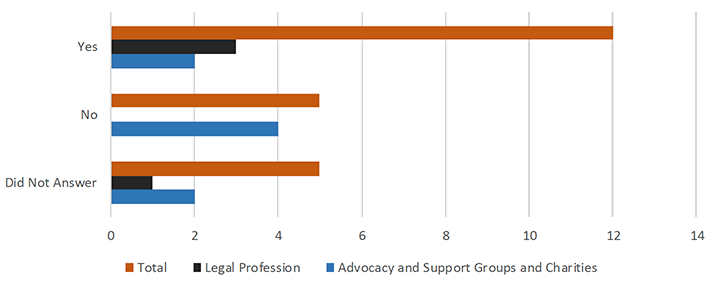
If not, please indicate where there are problems with the layout of the Letter and suggest an alternative layout.
A number of respondents stated that they did not feel that the current layout of the 'standard' version of the Letter helped meet the aims of conveying key information in a way that was easily understood. Four respondents suggested that the text box was not useful and did not add to the understanding of the information contained in the document.
5. Does the way the information is organised in the 'easy read' version of the Letter of Rights, i.e. with a text box at the beginning, help to convey key information in a way that is easily understood?
Yes/No
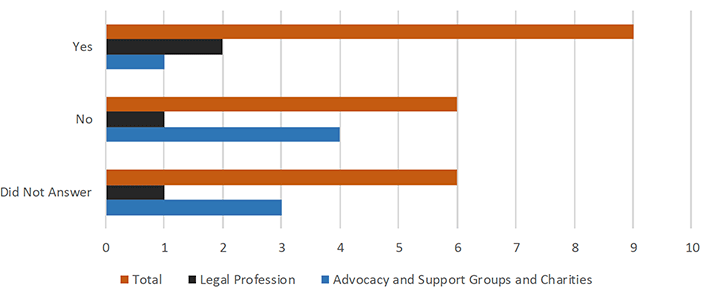
If not, please indicate where there are problems with the layout of the Letter and suggest an alternative layout.
As is highlighted in other questions, a large number of respondents have expressed concerns about the 'easy read' version of the Letter, however responses to this question did not raise any particular areas of concern around the layout of the 'easy read' version of the Letter.
6. What alternative format(s) do you think the Letter of Rights should be provided in, e.g. print, Braille, audio?
There were 18 responses to this question
Seven respondents suggested that the Letter of Rights could be made available in Braille, and 14 supported the production of audio/video version of the Letter.
Deaf Scotland did not mention a Braille version of the Letter but instead considered an audio visual format with subtitles to be most accessible for the largest number of individuals.
It was also suggested that the Letter could be made available in picture format and large print.
7. Do you have any other questions or comments on the content or format of the Letters?
There were 13 responses to this question.
Four respondents stated that they had no further comments to add.
One respondent suggested that the Letter could be formatted so as to be printed double sided, saving money and reducing the amount of paper required to print the Letter.
One respondent suggested that the Letter could be made available in a format that made it easier to understand for those with dyslexia.
Further comments centred around particular phrases that could be simplified to help ease understanding, concerns around some of the images used, language that is not standardised across both versions of the Letter and concerns around the clarity of information on the rights of under 16s and vulnerable individuals.
Questions on Accessibility and Language
8. Is the wording used in the 'standard' version of the Letter of Rights appropriate and accessible?
Yes/No
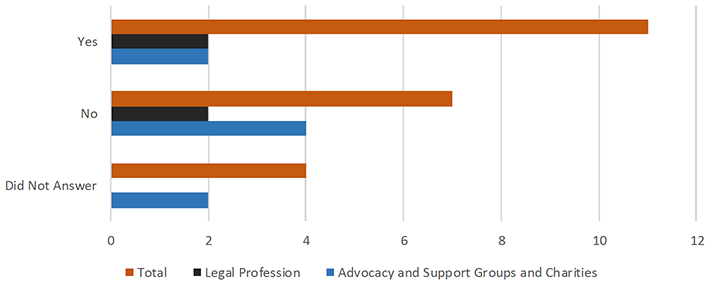
If not, please indicate areas where it is not appropriate or accessible and suggest alternatives.
Some respondents raised concerns around the clarity of the wording used in the Letter, suggesting that some terminology required explanation or that more accessible wording should be found.
While one respondent suggested that the term 'lawyer' would be more easily understood than 'solicitor', the Law Society of Scotland raised concerns that, as the term lawyer is not a reserved or protected title, any person can refer to themselves as a 'lawyer' regardless of qualification and status. The issues around the use of the term "lawyer" have been highlighted recently by the independent review of legal services, on which the Scottish Government will consult. To retain the use of the term 'lawyer' within the Letter of Rights may be inconsistent with the final proposals following consultation on review of legal services and will need to be considered carefully.
In any event we would suggest that the role of a solicitor is set out clearly as indicated above.
9. Is the wording used in the 'easy read' version of the Letter of Rights appropriate and accessible?
Yes/No
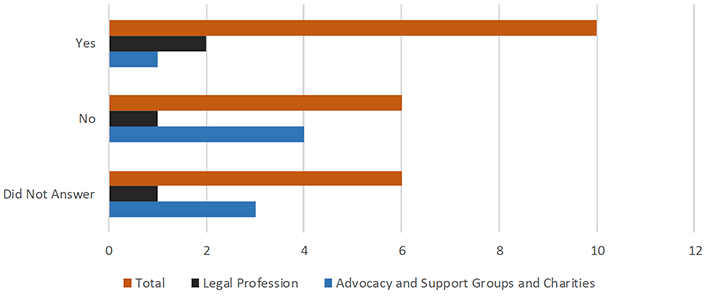
If not, please indicate areas where it is not appropriate or accessible and suggest alternatives.
Respondents raised concerns around the similarity of the language between the 'standard' and 'easy read' versions of the Letter and highlighted some phrases which are not presented in plain English, which should be the standard for such documents. Some technical phrases were not appropriately explained and the sentence structure is not appropriate for an 'easy read' document.
10. Does the 'easy read' version meet the aims of making the information provided easier to understand and more accessible to those with differing levels of literacy or with learning difficulties/disabilities?
Yes/No
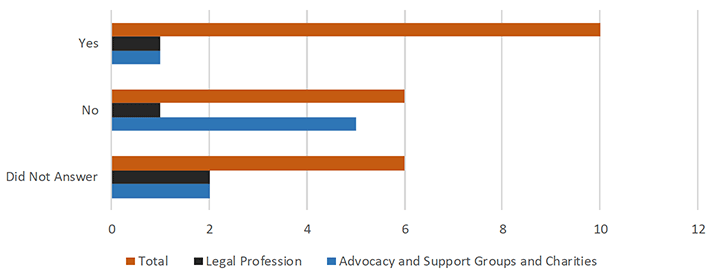
If not, why not?
Respondents identified a number of key issues with the 'easy read' version which would need to be addressed in order to make the 'easy read' version meet its accessibility aims.
There were concerns around the images used which is discussed in further detail at question 11 and a number of respondents raised the issue that the text in the 'easy read' version is the same as that in the 'standard' version and is therefore too complex. It was also commented that an "overwhelming" amount of information is included.
Concerns were also raised about the use of the document without the addition of 1 to 1 support to help ensure that individuals fully understood their rights as explained in the Letter.
11. Do the illustrations included in the 'easy read' version of the Letter of Rights help support understanding of the content of the Letter?
Yes/No
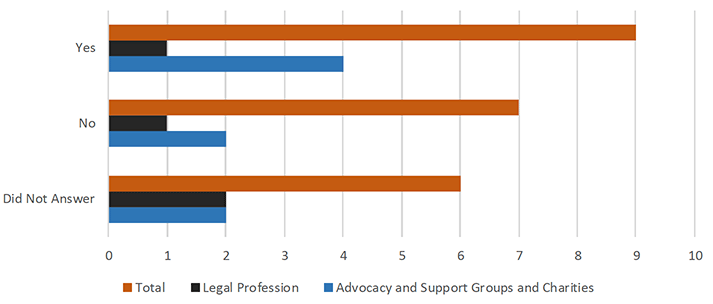
If not, please clarify whether you feel that removing the illustrations or using alternative illustrations would better help support the understanding of the Letter.
While 50% of respondents supported the view that the illustrations in the 'easy read' version of the Letter of Rights helped to support understanding, a number of concerns were also identified.
A number of respondents suggested that the illustrations were unclear and not easily understandable as representing concepts in the accompanying text.
Four respondents stated that the use of photographs is preferable to cartoons.
12. Aside from providing the 'easy read' version, how would you suggest the Letter of Rights is made accessible to those with differing levels of literacy or with learning difficulties/disabilities?
There were 15 responses to this question.
A number of respondents supported the provision of audio, braille and video versions of the Letter of Rights.
The importance of appropriate adults was also highlighted as a way to help individuals understand their rights as presented in the Letter.
Police Scotland highlighted the work to produce a video for custodies due to be trialled in March 2020.
13. Are there any further languages, in everyday use in Scotland, which you think the Letter of Rights should be made available in?
There were 11 responses to this question.
Seven respondents stated that there were no further languages that they were aware of. Of the remaining responses, British Sign Language (BSL) and Scots were suggested.
14. Do you have any other questions or comments on the accessibility of the Letter of Rights or the language used in the Letter?
There were 10 responses to this question.
Responses identified the importance of consulting subject matter experts when developing any revised versions of the Letter of Rights, concerns around prisoner uptake of the Letter and the importance of access to appropriate adults or interpreters to explain rights to an individual and discuss areas that they do not understand.
Contact
Email: LORConsultation@gov.scot
There is a problem
Thanks for your feedback